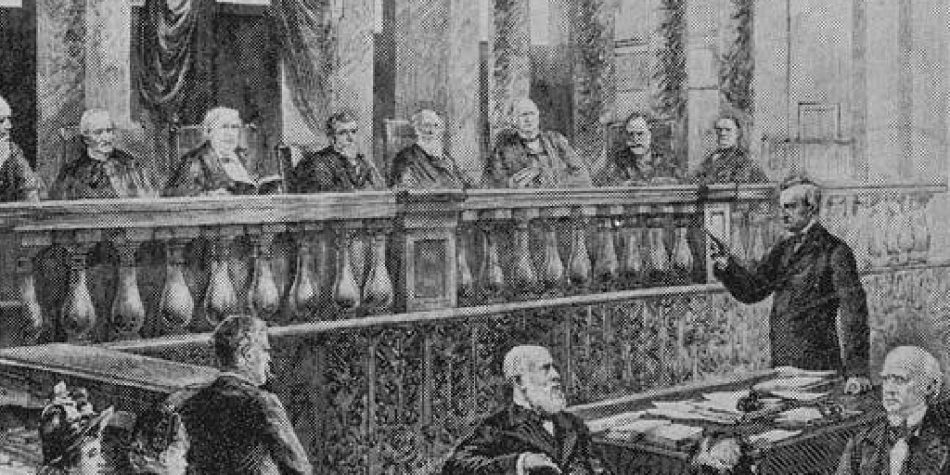After hearing for much of the past 9 months about a conservative takeover of the Supreme Court, the first term ended with many conservatives looking around and wondering, “Where was the takeover?”
This seemed to even frustrate some on the Court’s right who in a concurring opinion in the religious freedom case Fulton v. Philadelphia criticized their other conservative colleagues for not going far enough, and in another case chiding them for being too sensitive to outside criticism.
A working theory has begun to develop articulated by Josh Blackman in Newsweek and the Volokh Conspiracy that rather than a 6-3 conservative majority, the court now has a 3-3-3 split. In this arrangement Justices Sotomayer, Breyer, and Kagan make up the court’s left. Justices Alito, Thomas, and Gorsuch make up the court’s right. While Chief Justice Roberts and Justices Kavanaugh and Barrett make up the court’s center. What has been called the “institutionalist” block. To some observers, these institutionalists are less concerned with a consistent legal philosophy than they are with ensuring that the Supreme Court as an institution is seen as legitimate, and that means making concessions to the left-leaning political commentariat.
These kinds of formulations are certainly tempting for conservatives who still feel burned by Justice Souter who was nominated by President George Bush but then proceeded to side with the liberal faction of the court almost his entire tenure. And it’s been Republican-appointed justices such as Kennedy, O’Connor, and Roberts who have provided culture war victories to the left. Supreme Court justices are legal scholars first and their opinions often bend to the subtle particulars of an individual case.
Even Blackman would concede that while this understanding might be useful, it’s overly simplistic. Supreme Court justices are legal scholars first and their opinions often bend to the subtle particulars of an individual case and never quite perfectly align with the politics of the day. Even Justice Gorsuch on the conservative block has crossed over for LGBT+ civil rights wins, while Justices Breyer and Kagan on the liberal block have crossed over for important religious freedom victories.
I might also caution that Blackman’s structure is premature. While Kavanaugh’s centrism was largely predictable, Barrett is just ending her first term, which are notoriously unreliable, and her background suggests she will be more conservative over the long run.
But with the caution that this 3-3-3 structure might not be completely accurate, I’d like to defend the institutionalists at the court’s center.
Blackman dismisses this approach as “P.R.-based jurisprudence.” But in many ways, that’s precisely what the Supreme Court needs right now.
The big secret with the Supreme Court, of course, is that they have no actual power, except that we all agree that it does. But that agreement is under attack. Former President Donald Trump was at the forefront of these attacks. He openly considered ignoring Supreme Court rulings. And then later did ignore their rulings.
Those kinds of attacks on the legitimacy of the court are bound to leave lasting damage.
Not to be outdone, the left undermined the court making widely-shared but unfounded claims of hypocrisy in the nomination process that have prompted a renewed desire to pack the courts, undoing forty years of democracy in shaping the courts.
All said, the court is at a perilous point from both sides of the aisle. While a 6-3 majority could in theory make rapid unpopular conservative changes to the court, the effect would only be to increase calls for the court’s expansion. And a 7-6 liberal majority with little interest in precedent could wipe those away in no time.
Conservatives need not be in any rush. The oldest conservative justices are Clarence Thomas at 73 and Samuel Alito at 71. They could both easily survive three more terms of Democratic leadership. (And neither party has held the presidency for more than three terms in 70 years!)
This gives the institutionalists an opportunity to make important progress at the Supreme Court in a way that is incremental, avoids scrutiny, and allows the Court to maintain the authority necessary to have an actual impact.
The Supreme Court has a clear path to accomplish these iterative approaches on two of conservatives’ most important priorities: abortion and religious freedom. The big secret with the Supreme Court, of course, is that they have no actual power, except that we all agree that it does.
Similarly, in religious freedom cases, the important precedent is Employment Division v. Smith. This case made it much easier to restrict religious freedom, and conservatives hope to see it overturned. That precedent only applies, however, when laws are neutral. And as Jenna Reinbold outlined in a recent piece for Religion and Politics, the Supreme Court is no longer seeing most laws as neutral by default, thus circumventing the Smith rules. This is the reasoning John Roberts used in this term’s religious freedom case Fulton v. Philadelphia which found for the Catholic adoption agency unanimously.
By spreading these cases out over a series of terms, intermixed with largely consensus-building cases, the right can secure important victories—much like in the recent Americans for Prosperity Foundation v. Bonta—without undermining its perception as apolitical.
Conservatives have spent forty years seeking to make a generational shift on the Supreme Court. Now that the opportunity has arisen, it appears that too many are hoping for short-term gains rather than long-term stability. After recent years of jarring partisanship in two of the branches of our constitutional government, it seems refreshing to find the third branch working hard to find common ground when it could easily become the most partisan of the three. The “PR” institutionalism that is at the court’s center may be frustrating, but it’s also the most reliable path for the long-term changes conservatives are hoping for in American jurisprudence.

















